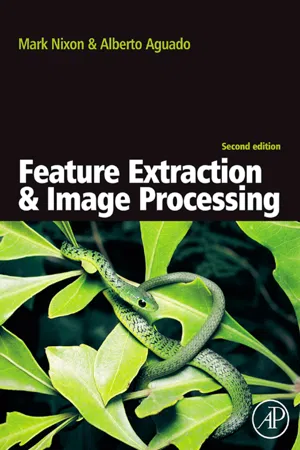
- 424 pages
- English
- PDF
- Available on iOS & Android
Feature Extraction & Image Processing
About this book
Whilst other books cover a broad range of topics, Feature Extraction and Image Processing takes one of the prime targets of applied computer vision, feature extraction, and uses it to provide an essential guide to the implementation of image processing and computer vision techniques. Acting as both a source of reference and a student text, the book explains techniques and fundamentals in a clear and concise manner and helps readers to develop working techniques, with usable code provided throughout. The new edition is updated throughout in line with developments in the field, and is revised to focus on mathematical programming in Matlab.- Essential reading for engineers and students working in this cutting edge field- Ideal module text and background reference for courses in image processing and computer vision
Frequently asked questions
- Essential is ideal for learners and professionals who enjoy exploring a wide range of subjects. Access the Essential Library with 800,000+ trusted titles and best-sellers across business, personal growth, and the humanities. Includes unlimited reading time and Standard Read Aloud voice.
- Complete: Perfect for advanced learners and researchers needing full, unrestricted access. Unlock 1.4M+ books across hundreds of subjects, including academic and specialized titles. The Complete Plan also includes advanced features like Premium Read Aloud and Research Assistant.
Please note we cannot support devices running on iOS 13 and Android 7 or earlier. Learn more about using the app.
Information
Table of contents
- Cover
- Title page
- Copyright Page
- Table of Contents
- Preface
- Chapter 1 Introduction
- Chapter 2 Images, sampling and frequency domain processing
- Chapter 3 Basic image processing operations
- Chapter 4 Low-level feature extraction (including edge detection)
- Chapter 5 Feature extraction by shape matching
- Chapter 6 Flexible shape extraction (snakes and other techniques)
- Chapter 7 Object description
- Chapter 8 Introduction to texture description, segmentation and classification
- Chapter 9 Appendix 1: Example worksheets
- Chapter 10 Appendix 2: Camera geometry fundamentals
- Chapter 11 Appendix 3: Least squares analysis
- Chapter 12 Appendix 4: Principal components analysis
- Index